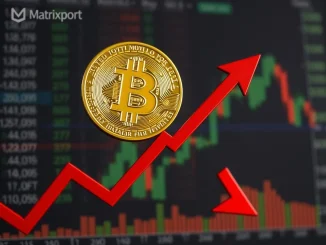
The crypto market is always dynamic, and understanding the forces at play is essential. This week, the focus is sharply on key indicators that could influence the Bitcoin price trajectory. Staying informed about these factors provides a clearer picture of potential market movements.
Will Bitcoin Price Test $92,000 Again?
One significant point of interest for many market observers is the potential for Bitcoin to retest the $92,000 level. This level represents a notable price point that, if reached or surpassed, could indicate continued upward momentum. Conversely, a failure to reach or break this level, or a rejection upon testing it, might suggest resistance is strong.
Market participants are watching volume and price action closely around this area. A strong push through $92,000 on significant volume could open the door for further gains. However, a move towards this level followed by rapid selling pressure would signal that sellers remain active at higher prices.
Impact of Macroeconomic Data on Bitcoin Forecast
Bitcoin’s sensitivity to traditional financial markets and global economic health continues to be a major factor. This week, significant U.S. Macroeconomic data releases are on the calendar, specifically Gross Domestic Product (GDP) and Personal Consumption Expenditures (PCE) data.
Why do these matter for your Bitcoin forecast?
- GDP: This is a key measure of economic activity. Strong GDP growth can sometimes signal a healthy economy, which might encourage risk-on investment, potentially benefiting assets like Bitcoin. Weak GDP could signal economic slowdown, leading to risk aversion.
PCE: The Personal Consumption Expenditures price index is the Federal Reserve’s preferred measure of inflation. Inflation data heavily influences central bank policy, particularly regarding interest rates. Higher-than-expected inflation could lead to expectations of tighter monetary policy, which has historically put pressure on risk assets, including crypto. Lower inflation might suggest the opposite.
These data points provide clues about the overall economic environment and potential shifts in monetary policy, both of which have a ripple effect on the crypto market.
Monitoring Short-Term Holders for Crypto Market Analysis
Understanding the behavior of different market participants is crucial for Crypto market analysis. Short-term holders (STHs) are typically defined as wallets that have held Bitcoin for less than 155 days. Their actions can significantly impact market supply dynamics.
A key metric to watch is when STHs return to profitability. When the average cost basis of STHs is below the current market price, these holders are ‘in profit’.
What happens when STHs become profitable?
- It can signal market strength, as recent buyers are seeing gains.
- However, it also introduces potential selling pressure, as STHs are historically more likely to sell their holdings to realize profits compared to long-term holders.
Monitoring the aggregate profitability of STHs provides insight into potential supply coming onto the market, which can influence price movements.
Putting It Together: An Actionable Outlook
These three factors are interconnected. Positive macroeconomic data might support a push towards the $92,000 level. If Bitcoin reaches new highs, STHs who bought at lower prices will become increasingly profitable, potentially leading to some selling. A strong market structure, however, could absorb this selling pressure.
For those following the market, keeping an eye on the economic calendar for GDP and PCE releases, watching the price action around the $92,000 mark, and observing on-chain data related to STH profitability will provide a comprehensive view of the forces influencing Bitcoin this week.
Summary: Key Takeaways for Your Bitcoin Forecast
This week presents several critical points of observation for the Bitcoin market. The potential retest of the $92,000 level is a technical focal point. Simultaneously, major U.S. macroeconomic data, particularly GDP and PCE, will offer insights into the broader economic climate and its potential impact on risk assets. Finally, tracking the profitability of short-term holders can provide valuable clues about potential supply dynamics. Monitoring these three factors offers a more informed perspective on the near-term Bitcoin forecast.



